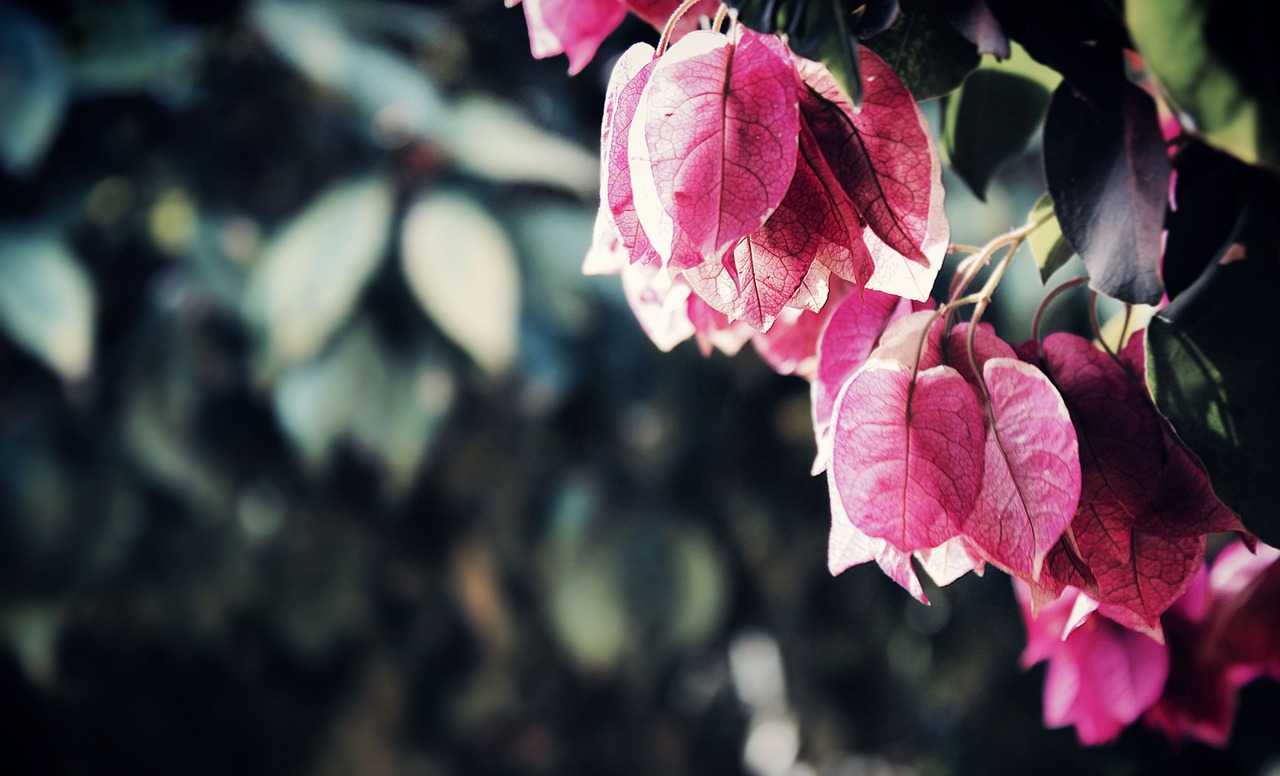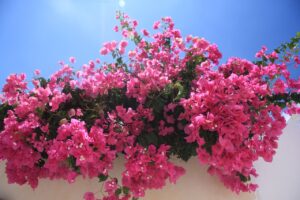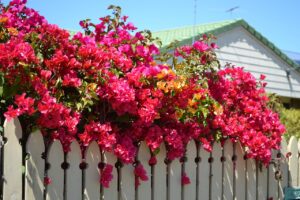Bougainvillea
Overview
The Bougainvillea plant is a stunning addition to any tropical or subtropical landscape, adorning its surroundings with a plethora of vivid bracts that mimic flowers in an array of colors. Belonging to the Nyctaginaceae family, it’s a hardy vine that not only adds a burst of color but thrives in warm, sunny environments. Perfect for creating a lush, vibrant display on walls or trellises, Bougainvillea is equally resilient and alluring, making it a favorite among gardeners seeking a touch of tropical flair.

Characteristics
Known for its dazzling colorful bracts, heat tolerance, and vigorous growth making it a popular ornamental plant in tropical and subtropical climates.
Region
Tropical and subtropical regions globally, especially South Florida, Arizona, South Texas, and Southern California.
Natural Habitat
The Bougainvillea plant is usually found in dry forests and scrub areas in its native Central and South American habitats.
Cultivation
Requires full sun, moderate watering with well-drained soil, and prefers acidic to slightly alkaline soil pH.
Uses and Benefits
Beyond its eye-catching aesthetic, Bougainvillea has several practical uses.
Aside from gracing gardens and patios as a stunning ornamental plant, it finds a place indoors as a potted houseplant in regions where the chill nips a bit too fiercely1. Its hardiness against drought and love for the sun make it a resilient companion for gardeners looking for low-maintenance yet flamboyantly flowering specimens4. The plant’s rapid and robust growth also offers a quick option for those wanting to add natural privacy screens or bursts of color to their landscape designs4. Whether as a hanging basket accent or a sprawling garden fixture, Bougainvillea brings a touch of tropical splendor to any setting.

Cultivation Tips
To successfully cultivate Bougainvillea, bask it in the glory of the sun — it loves sizzling, bright days. Warm climates are its paradise, so plant it in well-draining soil and provide regular water to establish strong roots, then ease on the H2O, as it’s quite drought-tolerant1. When the temperature dips, if you’re in a region where the mercury nods below 25 degrees, whisk your Bougainvillea indoors to escape the chill2. Remember, while this plant flaunts its tropical heart, it does need protection from frosty kisses. With love, light, and a touch of care, Bougainvillea will reward you with a riot of color that captures the vibrant soul of the tropics.
Happy planting, and bask in the vivid hues of your very own Bougainvillea haven!
Seasonal Considerations
Bougainvillea really comes into its own when the sun is generous and the days are long. It’s a plant that loves the warmth, thriving with zeal in the balmy seasons. As autumn chills the air, if you’re in chillier climes where the mercury dips below 25 degrees Fahrenheit, it’s time to usher your bougainvillea indoors to avoid frost damage2. While mature plants may handle a light frost, the young ones are particularly vulnerable. So, as the seasons turn, remember that it’s not just about enjoying their spectacular display; it’s about safeguarding their vivid beauty for the next season’s show.
This seasonal dance ensures that when the warm winds blow again, your bougainvillea will be ready to burst forth with its flamboyant palette.

Issues and Troubleshooting
Despite Bougainvillea’s reputation as a hardy, sun-loving plant, it can sometimes run into issues. If the leaves are wilting or dropping off, it could be due to overwatering. Bougainvillea craves well-draining soil and can’t tolerate soggy roots2. Beware of pests like aphids and mealybugs which are attracted to the plant’s tender new growth—these can be managed with insecticidal soap or horticultural oils4.
Notice that your plant isn’t blooming as expected? It might not be getting enough sunlight. These plants are sun worshippers and need plenty of direct light to show off their stunning colors1. Pruning at the wrong time can also discourage flowering. Remember to prune right after a bloom cycle, as this encourages new growth where flowers can form4. Lastly, proper fertilization is key; too much fertilization can lead to lots of leaves but few blossoms2. Keep these points in mind for a thriving Bougainvillea!
History and Folklore
The Bougainvillea plant dazzles with a history as colorful as its bracts. Native to South America, this plant’s discovery is credited to the French botanist Philibert Commerson in the 1760s, who named it after his friend, Louis Antoine de Bougainville, the French admiral and explorer3. The plant has since woven itself into local folklore across the globe.
In Brazil, it’s said that when the Bougainvillea is in full bloom, it brings harmony to a home. Elsewhere, it’s a symbol of peace and an encouragement for creativity and free expression. While robust and vibrant, these folkloric stories imbue the Bougainvillea with an almost magical quality—perhaps why it’s so endeared in gardens worldwide5.
References
1. Bougainvillea – Wikipedia, https://en.wikipedia.org/wiki/Bougainvillea
2. Bougainvillea: How to Plant, Grow and Care for Bougainvillea Plant – HGTV, https://www.hgtv.com/outdoors/flowers-and-plants/flowers/bougainvillea-care
3. Bougainvillea: Botanical Classification And Identification | ShunCy, https://shuncy.com/article/bougainvillea-scientific-name
4. Bougainvillea | Almanac.com, https://www.almanac.com/plant/bougainvillea
5. Bougainvillea spectabilis (great bougainvillea) | CABI Compendium, https://www.cabidigitallibrary.org/doi/10.1079/cabicompendium.9640
Nicolas Duval
Nicolas is a passionate advocate for nature and the art of wildcrafting. His dedication shines through in Wildcraftia, a website he meticulously crafted to serve as a haven for nature enthusiasts worldwide. Driven by a deep appreciation for nature’s connection to humanity, Nicolas embarked on his journey in 2011 with SmokableHerbs, a platform showcasing his love for nature’s bounty. Building upon this foundation, he established Smokably, a thriving online store offering premium herbs and blends to a global audience.
